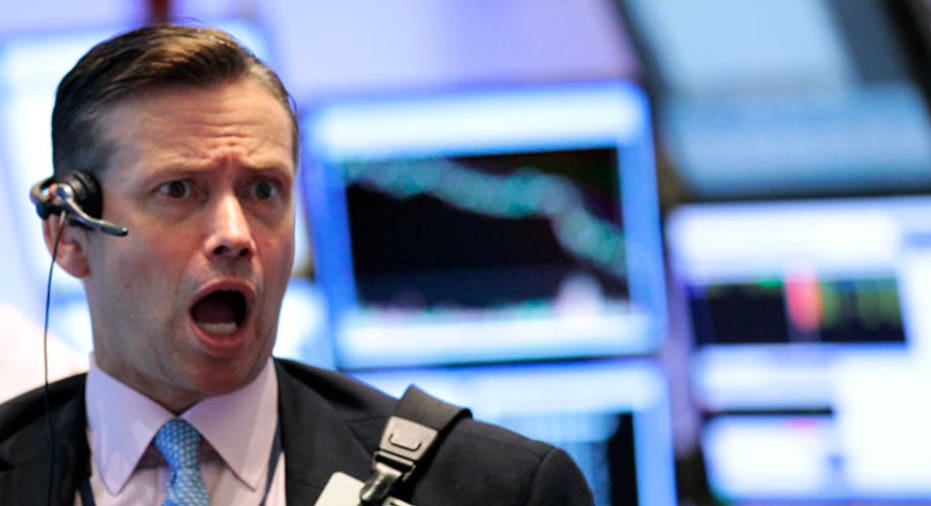Volatility Emerges from Winter-Long Hibernation -- But is it Here to Stay?

After going nearly silent throughout the winter, volatility has crept back onto Wall Street in recent days as investors fear a global economic slowdown, collapsing gold prices and scary geopolitical headlines.
Since tumbling to the ridiculously-low level of 11.05 in early March, the volatility index, or VIX, has surged as much 65%
“There’s a lot of concern that the economy hasn’t caught the kind of traction it needs to keep earnings growing,” said Nicholas Colas, chief market strategist at ConvergEx.
While it’s clear that volatility has staged a comeback from multiyear lows, investors are wondering if it can return to long-term averages, especially with Ben Bernanke pumping $85 billion of liquidity into the market each month.
Turbulence Reemerges
Still, it seems safe to say the VIX, Wall Street’s fear meter, is no longer hibernating.
By climbing as much as 10% on Thursday, the VIX touched its highest level since late February, and it isn’t that far from its recent high of 23.23 in late December amid the fiscal cliff mess.
Likewise, stock prices have felt the impact of turbulence, with the S&P 500 narrowly avoiding its first four-day streak of 1% moves since November 2011, according to Howard Silverblatt, senior index analyst at S&P Dow Jones Indices.
“The market could use a good shakeup, and up and down is much better than just down,” Silverblatt said in a note.
The return of volatility has been driven by a number of factors, including jitters about the status of the global economic recovery.
Relatively disappointing growth figures out of China helped spark Monday’s 266-point plunge on the Dow Industrials, their ugliest performance since the day after the 2012 election.
Slowdown Fears, Gold Meltdown
Domestic economic data haven’t been much prettier, highlighted by a gloomy March jobs report, substandard regional manufacturing gauges and tumbling consumer sentiment surveys.
“There really hasn’t been much in the upside surprise column for a couple of weeks now,” said Colas.
Market volatility has also been fueled by geopolitical concerns centered around North Korea as well as the tragic bombing in Boston on Monday, which helped fuel a 36% surge for the VIX -- its biggest one-day increase since August 2011 during the fumbled debt-ceiling negotiations.
“If you woke up Rip Van Winkle after 10 years and just read him the headlines, he’d say it should be at 40."
At the same time, market participants have been caught off guard by the meltdown in the gold market, which has fanned fears in some corners of deflation. Gold plummeted 9.4% on Monday, its largest one-day tumble since 1983 and eighth largest in history.
“The gold move really spooked people,” said Michael Block, chief equities strategist at Phoenix Partners Group.
In many ways, it was only a matter of time before the VIX bounced off its lows and made its presence felt.
“When it was down to the 12 level, that was ridiculous,” said Joe Saluzzi, co-head of trading at Themis Trading.
The early March levels actually represented VIX’s lowest trades since February 2007 -- about 10 months before the Great Recession officially began.
“Everyone just assumed QE would end all problems. Every joker who got on TV said everything is fine.”
Shouldn’t VIX be Even Higher?
Still, the VIX has incredibly managed to stay below its five-year average of 20 throughout 2013. And the VIX would have to more than double before it returned to its September 2011 highs of nearly 44 and quintuple before approaching the scary October 2008 levels of almost 90.
That inability to return to even historic norms is breeding skepticism that the current move can persist.
“What else do you need to see? A terror attack on U.S. soil, an erratic South Asian country with nuclear power. This is a laundry list of things that should take us well over 20, let alone to 20, and we’re not there,” said Colas.
“If you woke up Rip Van Winkle after 10 years and just read him the headlines, he’d say it should be at 40,” he added.
So what’s holding volatility back given the often alarming news flow?
Not surprisingly, observers point to the extraordinary measures unleashed by the Fed to encourage growth, highlighted by the controversial quantitative-easing bond-buying program that has pushed the central bank’s balance sheet above $3 trillion.
“When you have this much money sloshing around the system, it really is hard for events to cause sustainable volatility... unless it really is a catastrophic event,” said Colas.
Block concurs, saying: “We can try to fight it, but resistance is futile. Until there is some kind of sea change in public policy, it’s not going to do much good.”
All of this has prompted some options traders to consider placing bearish bets on the VIX whenever it begins to show signs of life.
“The broad consensus is you should short every volatility rally you see, no matter what the level,” said Colas. “Volatility traders have been burned so many times over the last three or four years thinking it will pick up and it never does.”